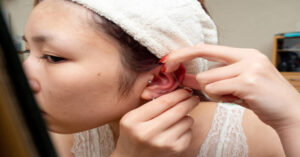Cellulogia is a term often associated with the study, discussion, and treatment approaches of cellulite. Cellulite itself is a natural condition in which the skin develops a dimpled or uneven appearance, usually around the thighs, hips, buttocks, and abdomen. Despite being extremely common—affecting up to 85–90% of women at some stage of their lives—cellulite continues to be misunderstood. It is often viewed only as a cosmetic concern, while in reality, it reflects a combination of skin structure, fat distribution, circulation, and connective tissue integrity.
Understanding cellulogia requires exploring not just what cellulite is, but also why it develops, what lifestyle factors worsen it, and what possible interventions exist. It is not a disease, but a natural occurrence in the human body. Still, many people seek ways to reduce its appearance for personal confidence, comfort, or aesthetic goals. This article provides a comprehensive, 3000-word discussion covering everything about cellulogia—its origins, contributing factors, preventive measures, treatment methods, and natural solutions.
What is Cellulite?
Cellulite is characterized by the appearance of dimpled or “orange peel” skin texture. Under the skin’s surface, fat deposits push against the connective tissue, creating uneven surface depressions. Although both men and women can develop cellulite, women are far more affected due to differences in fat distribution, connective tissue structure, and hormonal influences.
Cellulogia essentially revolves around the holistic exploration of cellulite: understanding its physical basis, acknowledging psychological effects, and promoting healthy approaches for improvement.
Causes of Cellulite
The development of cellulite is complex, involving multiple biological, hormonal, and environmental factors. No single cause explains it fully, but rather a combination of influences that interact differently in each person.
1. Hormonal Influence
Hormones play a primary role in the appearance of cellulite. Estrogen, in particular, affects fat distribution and connective tissue. As estrogen levels fluctuate with age, pregnancy, or menopause, connective tissues may weaken, making fat deposits more visible. Insulin, thyroid hormones, and prolactin also influence circulation and fat metabolism, indirectly contributing to cellulite formation.
2. Genetics
Genetics determine predisposition to cellulite. Family history influences skin thickness, connective tissue integrity, and fat distribution patterns. If a close female relative has noticeable cellulite, chances are higher of experiencing it too.
3. Lifestyle Factors
Unhealthy lifestyle habits exacerbate cellulite. Sedentary living reduces circulation, while excessive consumption of processed foods promotes fat accumulation and toxin buildup. Smoking, high alcohol intake, and dehydration further weaken connective tissue.
4. Aging
As we age, collagen production declines, skin elasticity decreases, and fat storage changes. This makes cellulite more prominent, especially in areas already prone to fat accumulation.
5. Poor Circulation and Lymphatic Drainage
Restricted blood flow and sluggish lymphatic drainage can trap fluids and toxins in tissues, worsening cellulite’s appearance. This is one reason massage therapies sometimes help—by stimulating circulation and drainage.
Grades of Cellulite
Cellulite is often classified into four grades, ranging from mild to severe. Recognizing the grade helps in understanding the extent and deciding on appropriate treatments.
| Grade | Appearance | Details |
|---|---|---|
| Grade 0 | No visible cellulite | Skin appears smooth, dimples only visible when pinched |
| Grade 1 | Mild | Skin appears smooth while standing, but dimpling shows when pinched |
| Grade 2 | Moderate | Dimples visible while standing without pinching |
| Grade 3 | Severe | Deep depressions and raised areas visible at all times, even when lying down |
The Psychology of Cellulite
While cellulite is harmless physically, it has psychological effects. Many people feel self-conscious, leading to lowered self-esteem, anxiety about body image, or avoidance of certain clothing like swimsuits or shorts. Recognizing that cellulite is a universal, natural feature of the body is important for mental well-being. Cellulogia encourages approaching it from a perspective of self-acceptance while also offering strategies for those who wish to reduce its appearance.
Preventive Lifestyle Measures
Though cellulite cannot always be completely prevented due to genetic and hormonal influences, healthy lifestyle adjustments can significantly minimize its severity.
1. Balanced Diet
Consuming nutrient-rich foods supports skin health and connective tissue strength. Diets high in antioxidants (found in fruits and vegetables), lean proteins, healthy fats, and whole grains reduce inflammation and aid in collagen maintenance. Reducing sugar, refined carbs, and sodium lowers fluid retention and fat accumulation.
2. Hydration
Adequate hydration improves skin elasticity and promotes effective toxin elimination. Drinking water throughout the day helps maintain smooth skin texture.
3. Regular Exercise
Exercise improves blood circulation, strengthens muscles under the skin, and reduces overall body fat. Resistance training, in particular, helps tighten the skin’s appearance, reducing the prominence of cellulite.
4. Avoiding Smoking and Excess Alcohol
Smoking weakens skin and connective tissue by reducing oxygen supply. Alcohol dehydrates the body and promotes fat storage, both of which worsen cellulite.
Medical and Professional Treatments
Several treatments are available to reduce the appearance of cellulite, ranging from non-invasive therapies to surgical options. Each comes with benefits and limitations.
1. Laser and Radiofrequency Treatments
Laser therapy uses energy to break down fat deposits, stimulate collagen, and improve circulation. Radiofrequency treatments heat tissues to promote tightening. Results are visible but often require multiple sessions.
2. Acoustic Wave Therapy
This technique uses sound waves to break down connective tissue bands responsible for dimpling. Over time, the skin appears smoother.
3. Subcision (Cellfina)
A minimally invasive surgical technique where a needle is inserted to cut fibrous bands pulling the skin downward. This provides long-lasting improvements.
4. Liposuction and Fat Transfer
Although traditional liposuction is not recommended specifically for cellulite, fat transfer techniques can help create a smoother skin surface.
5. Topical Treatments
Creams containing caffeine, retinol, or peptides temporarily improve appearance by tightening skin and reducing fluid retention. However, their results are usually short-lived.
Natural and Home Remedies
Cellulogia emphasizes natural approaches alongside medical treatments. Many people prefer safe, cost-effective methods that can be maintained at home.
1. Dry Brushing
Brushing the skin with a natural bristle brush stimulates circulation and lymphatic drainage, leading to temporary reduction in cellulite’s visibility.
2. Massage Therapy
Massaging with oils improves blood flow and helps break down fatty deposits. Techniques like cupping therapy or lymphatic massage are popular.
3. Essential Oils
Oils like grapefruit, juniper, and rosemary are believed to aid circulation when used in massage.
4. Herbal Supplements
Some herbs such as ginkgo biloba and gotu kola are linked with improved circulation and connective tissue support.
5. Homemade Scrubs
Coffee scrubs are widely used because caffeine tightens the skin temporarily and exfoliation improves circulation.
Nutritional Support for Cellulogia
Nutrition plays a significant role in cellulite management. Certain vitamins and minerals support collagen production, circulation, and fat metabolism.
| Nutrient | Function in Cellulite Management | Food Sources |
|---|---|---|
| Vitamin C | Boosts collagen production, improves skin elasticity | Citrus fruits, berries, peppers |
| Vitamin E | Antioxidant, protects skin cells | Nuts, seeds, spinach |
| Omega-3 Fatty Acids | Reduce inflammation, support healthy cell membranes | Fish, flaxseeds, walnuts |
| Zinc | Helps in tissue repair and healing | Pumpkin seeds, legumes, whole grains |
| Protein | Builds muscle under the skin, supports connective tissue | Eggs, lean meat, legumes |
Exercise Strategies for Cellulogia
Targeted workouts improve muscle tone in cellulite-prone areas, reducing visible dimpling. A mix of cardio, strength training, and flexibility exercises is most effective.
Effective Exercises:
- Squats: Strengthen thighs and buttocks.
- Lunges: Tone hips and legs.
- Bridges: Activate glutes and hamstrings.
- Step-Ups: Improve circulation and lower body muscle tone.
- Planks with Leg Lifts: Engage core and glutes simultaneously.
Consistency in exercise matters more than intensity. Combining these with cardiovascular activities like cycling, swimming, or brisk walking maximizes results.
Cellulogia and Self-Care
Self-care practices are integral to cellulogia, as they help balance both physical and mental health. Mindfulness, stress management, and adequate sleep all influence hormonal balance and skin condition. Chronic stress elevates cortisol, which can worsen fat storage and fluid retention. Prioritizing relaxation through yoga, meditation, or hobbies indirectly supports cellulite reduction.
Conclusion
Cellulogia is not merely about reducing cellulite; it is about understanding its origins, respecting the body’s natural structure, and adopting healthy, sustainable approaches. While no treatment completely eliminates cellulite, a combination of preventive lifestyle practices, natural remedies, and professional treatments can minimize its appearance significantly. More importantly, embracing body positivity and self-acceptance ensures that cellulite does not become a barrier to confidence and well-being.
ALSO READ: Understanding Candizi: An In-Depth Informational Guide
FAQs on Cellulogia
Q1: Can cellulite be completely cured?
No, cellulite cannot be entirely cured because it is a natural structural characteristic of the skin. However, treatments and lifestyle changes can significantly reduce its visibility.
Q2: Does weight loss eliminate cellulite?
Not always. While losing weight can reduce fat deposits, cellulite can still persist because it is also influenced by connective tissue structure and circulation.
Q3: Are men affected by cellulite too?
Yes, but less commonly. Men’s connective tissues are structured differently, making cellulite less noticeable, though it can occur in overweight men or those with hormonal imbalances.
Q4: What is the best exercise for cellulite reduction?
Strength training exercises such as squats, lunges, and bridges combined with cardio workouts are most effective in reducing cellulite appearance.
Q5: Are home remedies like coffee scrubs truly effective?
Coffee scrubs provide temporary tightening and improved circulation, which may reduce cellulite’s visibility short-term. However, consistent lifestyle changes are needed for lasting results.









